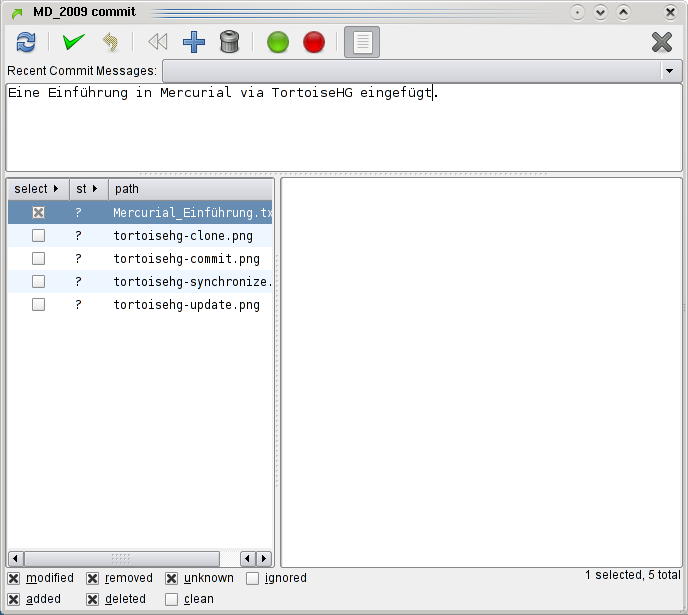

- #MERCURIAL WINDOWS TUTORIAL MAC OS X#
- #MERCURIAL WINDOWS TUTORIAL INSTALL#
- #MERCURIAL WINDOWS TUTORIAL DOWNLOAD#
I've tried to put them in order, simplest to most detailed. Here are some other good articles and tutorials that I've found. The best Mercurial tutorial is Hg Init by Joel Spolsky.
#MERCURIAL WINDOWS TUTORIAL INSTALL#
Linux: Use your spiffy installer to find and install mercurial.

Windows: Mercurial-1.8.1 (but use TortoiseHg!).If you are a Linux user, you have some spiffy Linux-version-specific command to do all this stuff, and you know what to do. hgrc in my home directory with this information: # This is a Mercurial configuration file. Then I had to tell the MercurialEclipse plugin where to find Mercurial ( /usr/local/bin/hg). Then I checked to make sure Python 2.6 was installed.
#MERCURIAL WINDOWS TUTORIAL MAC OS X#
On Mac OS X 3.6.6, I had to install the Mylyn plugin. On Windows 7, I already had Mylyn, and the plugin just worked.
#MERCURIAL WINDOWS TUTORIAL DOWNLOAD#
If you already have or can install Mylyn, well and good if not, you might find it easier to download a version of Eclipse that already has it installed (Eclipse IDE for Java Developers, or Eclipse IDE for Java EE Developers). What the web page doesn't tell you, though, is that you need to have Mylyn already installed. This provides a nice GUI interface to Mercurial's features. There is an Eclipse plugin, MecurialEclipse (formerly hgEclipse).

They all use (mostly) the same terminology, and they may all look different, but every Mercurial GUI is just a front end to command-line Mercurial. Keep this in mind when you read about the various GUI front-ends to Mercurial. You can use it directly from the command line. Mercurial is, first and foremost, a command-line program. At the command line, hg is used to refer to Mercurial. The chemical symbol for the element mercury is Hg. Our interest here is in developing Java programs, preferably (but not necessarily) in Eclipse. A history is kept, so that you can go back to any previously saved version, at any time. The idea is that any number of people can work on adding to and revising the same documents. Mercurial is a distributed version control system (DVCS), similar to Git, but very different from older version control systems such as Subversion and CVS.


 0 kommentar(er)
0 kommentar(er)
